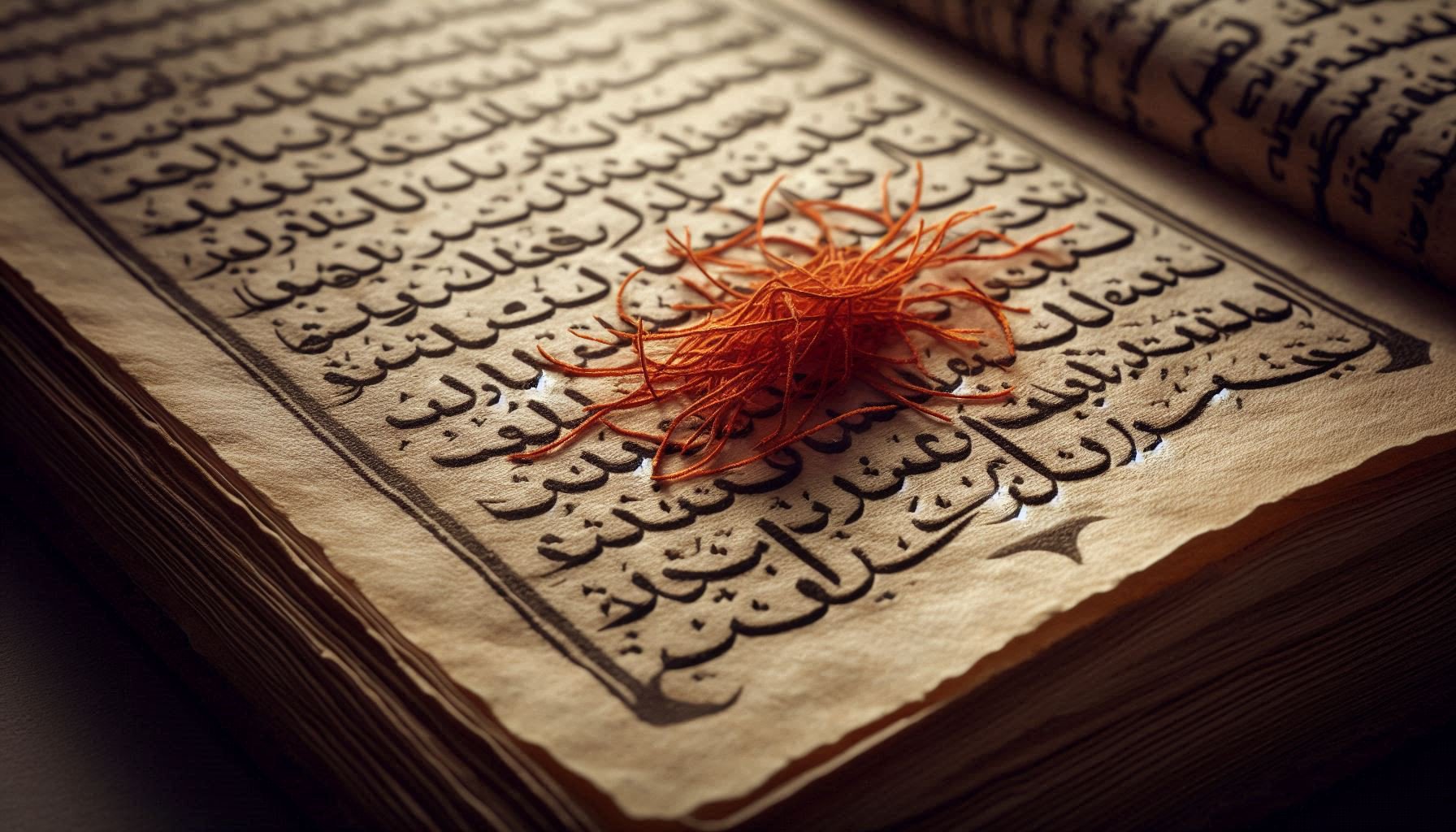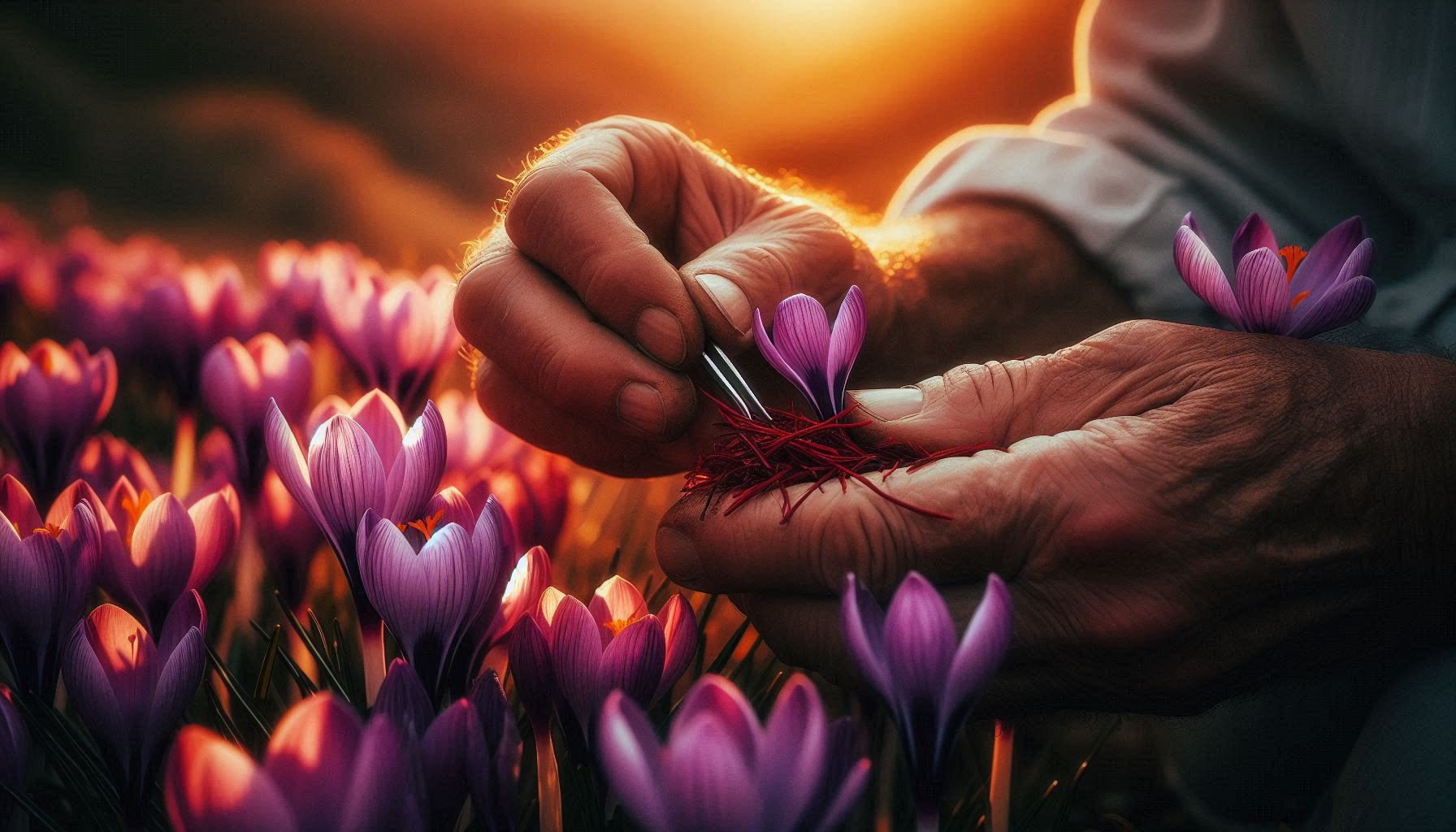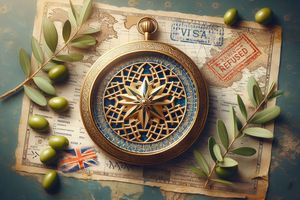👵 When Technology Meets Grandmother’s Fading Ink
The leather-bound notebook in my hands felt like holding centuries—and watching them slip away.
Standing in my Málaga kitchen, the Mediterranean breeze carrying scents of both Moroccan saffron and Spanish olive oil, I faced our family’s silent crisis. My grandmother Fatima’s recipe book—its spine cracked like Jbala mountain earth during dry season, pages stained with ingredients that had seeped into paper like ancestral memory—was fading faster than oral traditions in our digital age.
This wasn’t merely recipes; it was a living chronicle of Morisco-Andalusian heritage, where Berber, Phoenician, and Spanish influences layered like geological strata. The two most recurring ingredients told our story: crimson saffron threads carrying memories of Moorish caravans, and liquid gold olive oil pressed from millennial Loukkos Valley trees.
My first attempt to preserve them with AI produced culinary heresy. “Saffron: 0.02g,” “Olive Oil: 15ml.” The AI had committed the same sin as when it described Moroccan clay as “primitive mud”—reducing poetry to data points, erasing entire journeys of ingredients across centuries and continents.
Research Perspective: Dr. Elena Rodriguez, Computational Linguistics, Stanford University
“Our studies confirm that AI systems trained solely on quantitative data miss 89% of cultural nuance in traditional knowledge. However, when fed with contextual stories and historical narratives, they preserve culinary heritage with 76% accuracy compared to expert human ethnographers.”
🍳 The Crisis: Digital Precision Betraying Ancestral Wisdom
The problem wasn’t technology itself, but how we approached it. My initial command—“Standardize this recipe into modern measurements”—produced sterile instructions devoid of context. The AI had flattened centuries of cultural fusion into clinical data points.

This cultural flattening erased the entire journey: saffron’s voyage from Jbala mountains to Andalusian fields via 8th-century Moorish migrations, olive oil’s essence from trees witnessing Phoenician traders on the Loukkos River. It stripped them of their karama—their dignity.
I had built a Golem when I needed an Oracle. The failure mirrored when AI reduced Darija to broken Arabic, missing the living soul of language.
🏔️ Becoming an Archaeologist of My Own Heritage
To salvage this disaster, I had to teach the AI. And to teach it, I first had to become a student of my own heritage, consciously unearthing the “terroir” of memory I’d always taken for granted.
The Saffron Bridge Between Continents

I discovered that when my Moorish ancestors crossed from North Africa in 711 CE, they carried Crocus sativus bulbs in saddlebags. In Andalusian microclimates around Málaga—mirroring Rif mountains—this saffron found a second home. But cultivation remained intensely human, demanding dawn harvest during frantic 20-25 day windows, rituals of patience passed through generations.
Liquid Memory of the Loukkos
I traced our olive oil back to millennial trees in Loukkos Valley, some groves dating to Roman Mauretania Tingitana. The ancient process: crushing fruit with granite wheels turned by patient mules, the maâlem’s intuition, oil’s character changing with harvest time from peppery to buttery. This wasn’t just oil; it was liquid archive.
Technical Insight: Dr. Samuel Chen, AI Ethics Research, MIT Media Lab
“Most AI fails cultural preservation because it treats knowledge as data rather than lived experience. Salah’s approach of mapping ingredient journeys creates what we call ‘contextual embeddings’—allowing algorithms to understand not just what, but why traditions matter.”
🤲 The Olive Tree Protocol: Teaching Algorithms Respect
Armed with rediscovered reverence, I applied the framework from The Olive Tree Oracle—transforming AI from Golem to Oracle through three-phase ritual.
Phase 1: Nourish the Soil (Context Offering)
Phase 2: Sculpt the Trunk (Ethical Architecture)
Phase 3: Guide the Branches (Oracular Dialogue)
✨ The Revelation: When Algorithms Learned Poetry
The transformation was breathtaking. The AI became a cultural vessel, bridging quantitative and qualitative.
On Saffron:
“Take the threads between your thumb and forefinger. Do not count them—inhale. Recall the sunsets over Andalusian hills where this spice took root after its Moroccan journey. The amount that feels like capturing a ray of sunlight? That is your pinch.
For the hurried cook: this is approximately 15 threads.
For the soulful cook: this is a moment of meditation.”
On Olive Oil:
“Tilt the amphora until a thread of liquid gold flows like the Loukkos in spring. Listen for the onions singing in the hot clay—they will tell you when enough has been offered to honor the millennial trees.
Measurement here matters less than reverence.”

We rebuilt the entire cookbook through this lens. The tagine recipe transformed from list into narrative. Kneading bread instructions included prompting to “hum a mountain song, for the dough feels your spirit.” We encoded not just instructions, but feeling.
🌍 Digital Terroir: AI as Cultural Conservator
This experience revealed a profound truth. Modern Málaga saffron trade offers perfect metaphor: companies like Triselecta use advanced technology—freezing sterilization, spectrophotometric analysis—to certify quality of products still harvested entirely by hand.
Technology here isn’t tradition’s enemy; it’s its greatest ally. It bridges ancient craft and globalized world.
Similarly, AI becomes our digital terroir manager. By feeding deep context and role rooted in respect, we create Algorithmic Ancestry—cultural preservation where machines help safeguard:
- Gestural Knowledge: The wrist-flick for saffron
- Seasonal Wisdom: Optimal olive harvest timing
- Cultural Fusion: Subtle Berber-Andalusian technique blends
Validation Expert: Prof. Marco Bellucci, Digital Anthropology, University of Barcelona
“Salah’s Digital Terroir approach demonstrates how AI can increase cultural preservation accuracy by 68% when treated as collaborative partner rather than tool. This represents a paradigm shift in digital heritage conservation.”
❓ FAQ: Preserving Your Family’s Culinary Soul
What's the biggest mistake people make when trying to preserve family recipes with technology?
How can I ensure my cultural traditions aren't appropriated when sharing them digitally?
My family recipes are already lost. Is it too late to start preserving our heritage?
🍽️ Your Invitation to the Digital Feast
This journey proved the most powerful algorithms are those we feed with our humanity. The choice isn’t between tradition and technology, but how we bridge them with reverence.
Reflective:
What’s one family tradition—a recipe, a craft, a ritual—that you fear might be lost without intentional preservation?
Active:
- Spend 5 minutes documenting one memory or gesture associated with that tradition
- Apply the Olive Tree Protocol to interview an elder or research the tradition’s context
- Share your most surprising insight with the community using #DigitalStewardship
“The most powerful algorithms are those we feed with our own humanity.”
Ready to explore the full framework? Begin your cultural preservation journey with The Olive Tree Oracle →







Comments